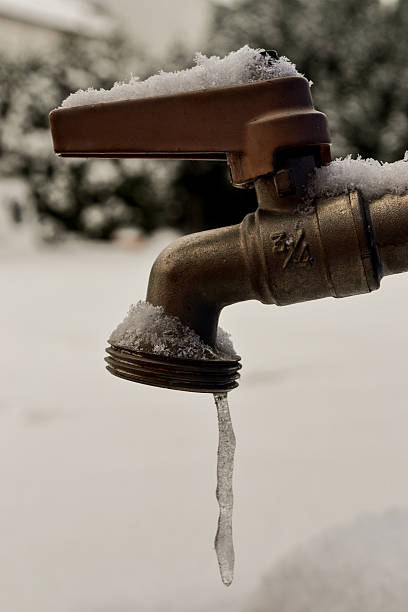Guidance for Avoiding Frozen Pipes in Cold Weather: Professional Advice
Guidance for Avoiding Frozen Pipes in Cold Weather: Professional Advice
Blog Article
Just how do you really feel about How to prepare your home plumbing for winter weather?

Cold weather can wreak havoc on your pipes, specifically by freezing pipelines. Right here's how to stop it from occurring and what to do if it does.
Intro
As temperatures decrease, the danger of icy pipes increases, possibly causing expensive repair work and water damages. Recognizing exactly how to prevent icy pipes is essential for homeowners in cool climates.
Avoidance Tips
Protecting at risk pipes
Cover pipes in insulation sleeves or make use of heat tape to protect them from freezing temperature levels. Focus on pipes in unheated or external areas of the home.
Home heating strategies
Keep interior rooms properly heated up, particularly locations with pipes. Open up cabinet doors to enable cozy air to flow around pipelines under sinks.
How to identify frozen pipes
Look for decreased water flow from faucets, unusual odors or noises from pipes, and visible frost on exposed pipelines.
Long-Term Solutions
Structural modifications
Think about rerouting pipelines far from exterior walls or unheated locations. Include added insulation to attics, basements, and crawl spaces.
Upgrading insulation
Purchase high-quality insulation for pipelines, attics, and walls. Proper insulation helps maintain consistent temperatures and decreases the risk of frozen pipes.
Safeguarding Outside Plumbing
Yard hose pipes and outside faucets
Disconnect and drain pipes yard tubes prior to wintertime. Set up frost-proof spigots or cover exterior taps with protected caps.
Comprehending Frozen Pipelines
What triggers pipes to ice up?
Pipelines freeze when revealed to temperatures listed below 32 ° F (0 ° C) for prolonged periods. As water inside the pipelines freezes, it increases, putting pressure on the pipe wall surfaces and potentially triggering them to rupture.
Risks and problems
Frozen pipelines can lead to water interruptions, home damages, and expensive repair services. Ruptured pipelines can flood homes and trigger considerable structural damage.
Indications of Frozen Piping
Identifying frozen pipes early can prevent them from rupturing.
What to Do If Your Pipes Freeze
Immediate actions to take
If you think frozen pipes, maintain taps open up to soothe stress as the ice thaws. Make use of a hairdryer or towels taken in hot water to thaw pipes slowly.
Conclusion
Preventing frozen pipelines calls for aggressive actions and fast actions. By comprehending the reasons, indications, and preventive measures, home owners can shield their pipes throughout winter.
5 Ways to Prevent Frozen Pipes
Drain Outdoor Faucets and Disconnect Hoses
First, close the shut-off valve that controls the flow of water in the pipe to your outdoor faucet. Then, head outside to disconnect and drain your hose and open the outdoor faucet to allow the water to completely drain out of the line. Turn off the faucet when done. Finally, head back to the shut-off valve and drain the remaining water inside the pipe into a bucket or container. Additionally, if you have a home irrigation system, you should consider hiring an expert to clear the system of water each year.
Insulate Pipes
One of the best and most cost-effective methods for preventing frozen water pipes is to wrap your pipes with insulation. This is especially important for areas in your home that aren’t exposed to heat, such as an attic. We suggest using foam sleeves, which can typically be found at your local hardware store.
Keep Heat Running at 65
Your pipes are located inside your walls, and the temperature there is much colder than the rest of the house. To prevent your pipes from freezing, The Insurance Information Institute suggests that you keep your home heated to at least 65 degrees, even when traveling. You may want to invest in smart devices that can keep an eye on the temperature in your home while you’re away.
Leave Water Dripping
Moving water — even a small trickle — can prevent ice from forming inside your pipes. When freezing temps are imminent, start a drip of water from all faucets that serve exposed pipes. Leaving a few faucets running will also help relieve pressure inside the pipes and help prevent a rupture if the water inside freezes.
Open Cupboard Doors
Warm your kitchen and bathroom pipes by opening cupboards and vanities. You should also leave your interior doors ajar to help warm air circulate evenly throughout your home.
.jpg)
We had been brought to that article about Helpful Tips to Prevent Frozen Pipes this Winter through someone on our other web page. For those who enjoyed our article kindly remember to share it. Thank-you for your time spent reading it.
Call Today Report this page